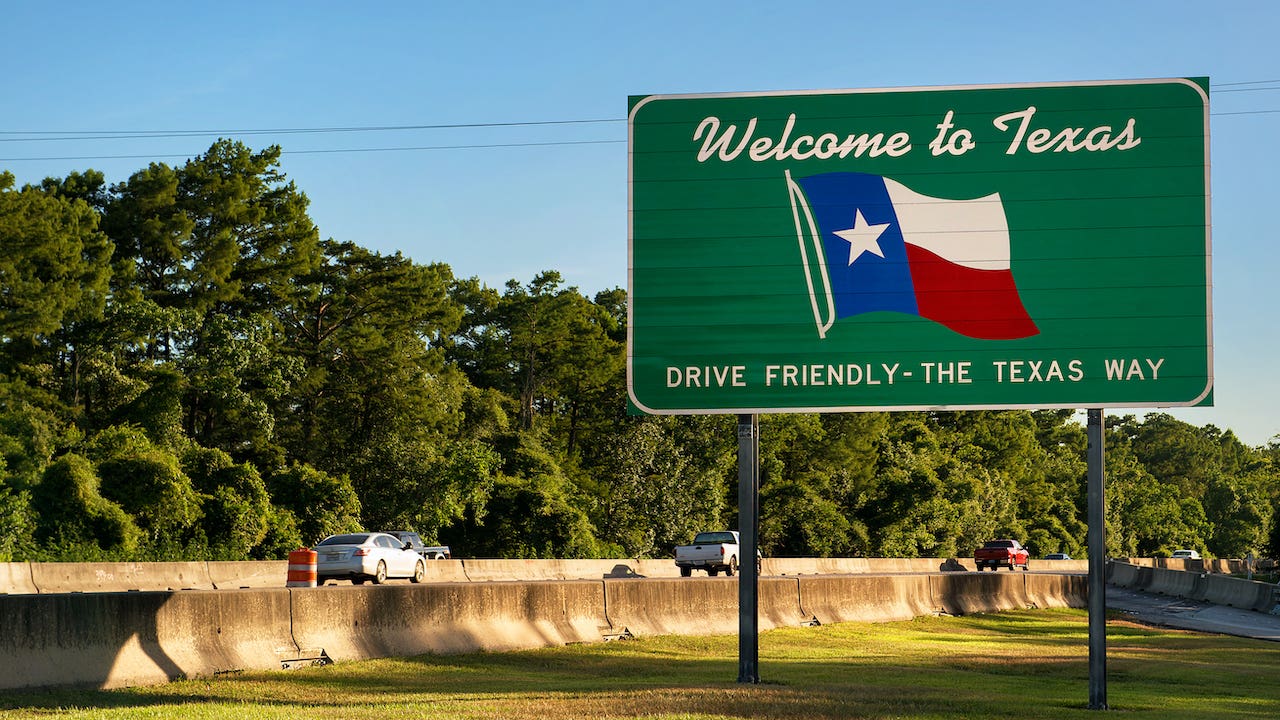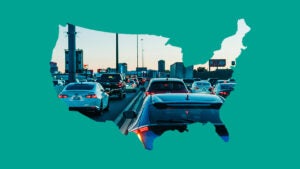5 most and least popular states for Americans who moved during COVID

The coronavirus pandemic spurred a wave of migration. Americans are moving out of the Northeast, the Midwest and California and into affordable Sun Belt states.
The national population expanded by 1.15 million from mid-2019 to mid-2020, according to population estimates from the U.S. Census Bureau. Just two states — Texas and Florida — added a combined 600,000 people, accounting for more than half of the nation’s population growth over the year.
“Texas and Florida and a few other states have been really the big gainers in terms of net population growth,” says Frank Nothaft, chief economist at real estate data firm CoreLogic.
Arizona and North Carolina also attracted new residents. The biggest losers were New York, Illinois and California.
Americans clearly are moving out of denser urban areas and into less-dense suburban areas, says Robert Dietz, chief economist at the National Association of Home Builders. “We saw housing demand moving to lower-density areas because people need the space for home offices,” he said this week during the group’s annual conference.
The census data captures only the first few months of the COVID-19 pandemic. As many office workers transition into permanent work-from-home arrangements, housing economists say the migration trends are likely to intensify. White-collar workers are able to afford more space by moving out of big cities and into suburban areas.
Top 5 states for population growth
The five states with the most growth expanded by a combined 900,000 people from July 1, 2019, to July 1, 2020. They are:
- Texas. Known for modest taxes and affordable housing, Texas added an estimated 373,965 residents from mid-2019 to mid-2020.
- Florida. The Sunshine State, which boasts no state income tax, grew by 241,256 people in a year.
- Arizona. Benefitting from its proximity to California, Arizona has appealed to Golden State movers. Arizona added 129,558 people.
- North Carolina. The state added an estimated 99,439 residents.
- Georgia. The state grew by 81,997 residents.
5 states losing the most population
- Pennsylvania. The state lost an estimated 15,629 people from mid-2019 to mid-2020.
- Michigan. The Rust Belt state lost 18,240 residents.
- California. Reversing a trend of population growth over the past decade, California lost an estimated 69,532 residents. Home prices have grown eye-wateringly expensive.
- Illinois. Continuing a trend of outward migration, Illinois shrank by 79,487 people from mid-2019 to mid-2020.
- New York. The state was hit hard in the early months of the coronavirus pandemic. New York lost an estimated 126,355 residents.
Why Texas is growing so quickly
Texas, the nation’s second-largest state, boasts comparatively low home prices and a relatively light tax burden. Houston, Dallas and Austin already were corporate hubs, and they’ve gained appeal.
Texas’ strong job growth makes it appealing to younger workers, Nothaft says. In recent months, two Silicon Valley stalwarts announced plans to move their headquarters to Texas. Hewlett Packard Enterprises is going to Houston, while Oracle will relocate to Austin.
“A lot of corporations are moving their headquarters to Texas because we’re business-friendly,” says Mark Dotzour, an independent housing analyst and former chief economist at the Real Estate Center at Texas A&M University.
Texas imposes fewer restrictions on homebuilding than California. As a result, the Dallas-Fort Worth metro area alone has more new homes being built than the entire state of California, Nothaft says.
Even so, homebuyers in Texas face a tight inventory of homes for sale. During the third quarter of 2020, there was just a 2.3-month supply of homes, reflecting an intense seller’s market.
“Our housing shortage just gets bigger and bigger and bigger,” Dotzour says. “There’s going to be a chronic shortage of single-family houses here, and home prices are going to increase dramatically.”
However, work-from-home arrangements could open up rural areas for new homebuilding, Dotzour says. If white-collar workers never go to the office, or commute only once or twice a week, they’ll be willing to live farther away from city centers.
“Land developers have told me for three decades that most people will not tolerate a commute of more than 45 minutes each way,” he says. “My hypothesis is that people might be willing to drive 60 minutes if they only have to go in to work twice a week.”
Where does your state rank?
| Rank | State | Population change |
|---|---|---|
| 18 | Alabama | 13,567 |
| 39 | Alaska | -2,445 |
| 3 | Arizona | 129,558 |
| 22 | Arkansas | 9,537 |
| 49 | California | -69,532 |
| 9 | Colorado | 49,233 |
| 43 | Connecticut | -9,016 |
| 21 | Delaware | 10,141 |
| 29 | District of Columbia | 4,563 |
| 2 | Florida | 241,256 |
| 5 | Georgia | 81,997 |
| 41 | Hawaii | -8,609 |
| 12 | Idaho | 37,853 |
| 50 | Illinois | -79,487 |
| 15 | Indiana | 23,943 |
| 31 | Iowa | 3,965 |
| 34 | Kansas | 1,170 |
| 28 | Kentucky | 4,906 |
| 46 | Louisiana | -12,967 |
| 30 | Maine | 4,371 |
| 35 | Maryland | 848 |
| 38 | Massachusetts | -1,309 |
| 48 | Michigan | -18,240 |
| 17 | Minnesota | 17,289 |
| 45 | Mississippi | -11,441 |
| 19 | Missouri | 11,073 |
| 20 | Montana | 10,454 |
| 27 | Nebraska | 4,981 |
| 10 | Nevada | 47,488 |
| 26 | New Hampshire | 5,492 |
| 42 | New Jersey | -8,887 |
| 24 | New Mexico | 6,685 |
| 51 | New York | -126,355 |
| 4 | North Carolina | 99,439 |
| 33 | North Dakota | 1,585 |
| 40 | Ohio | -3,290 |
| 16 | Oklahoma | 20,107 |
| 14 | Oregon | 25,391 |
| 47 | Pennsylvania | -15,629 |
| 37 | Rhode Island | -1,033 |
| 7 | South Carolina | 60,338 |
| 25 | South Dakota | 5,590 |
| 8 | Tennessee | 56,509 |
| 1 | Texas | 373,965 |
| 11 | Utah | 46,496 |
| 36 | Vermont | -699 |
| 13 | Virginia | 33,921 |
| 6 | Washington | 79,588 |
| 44 | West Virginia | -10,476 |
| 23 | Wisconsin | 8,074 |
| 32 | Wyoming | 2,212 |





